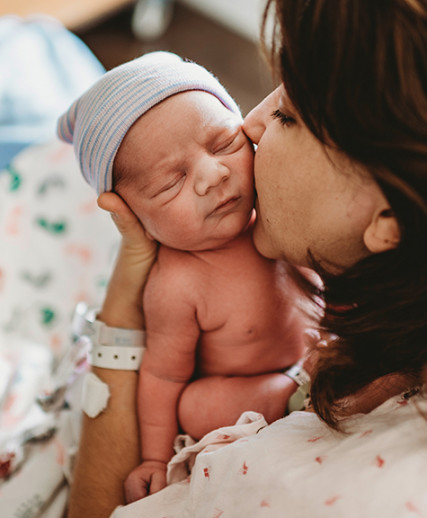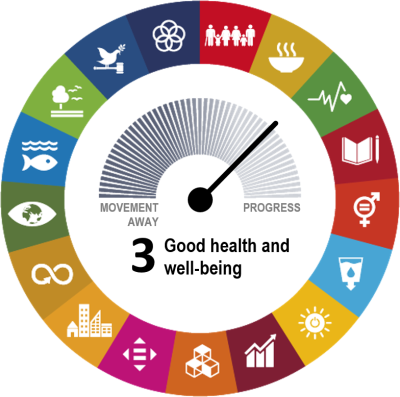Third pregnancies often lead to shorter labor durations compared to first and second births. Statistically, labor for third-time mothers may progress more quickly.
Expectant mothers approaching their third childbirth typically find reassurance in statistics that suggest a quicker labor experience. Third pregnancies can have various implications for labor and delivery, with data indicating that subsequent labors tend to be faster due to the body’s prior adaptations to childbirth.
Understanding these statistics helps mothers-to-be set realistic expectations and prepare for delivery. The nuances of labor during a third pregnancy can also influence a mother’s choice of birth plan, pain management strategies, and the level of support she might need. This information is crucial for healthcare providers to tailor their care and for mothers to align their childbirth expectations with likely scenarios, fostering a sense of preparedness as their due date approaches.
Trimester Triumphs
Excitement builds as you enter the final stage of your third pregnancy. Each trimester brings unique victories. An understanding of labor patterns during the third pregnancy is key. Moms often feel more confident and knowledgeable. This familiarity can lead to a smoother labor experience.
Pacing Patterns
Faster labor is common in third-time moms. The body remembers. It may jump into action more quickly. Let’s explore the pacing patterns often seen:
- Shorter early labor: Many women experience a quicker progression through the first phase.
- Active labor: This phase often takes less time than in first-time moms.
- Delivery: The pushing stage may be shorter, leading to an expedited delivery.
Symptom Shifts
As the body prepares for childbirth, symptoms change. This table outlines typical symptom shifts:
| Trimester | Common Symptoms | Third-Time Changes |
|---|---|---|
| First | Morning sickness, fatigue | May be less intense |
| Second | Energy boost, appetite increase | Higher energy levels |
| Third | Braxton Hicks, nesting instinct | Braxton Hicks may feel stronger |
Contractions may begin earlier and feel more familiar. The nesting instinct can be more pronounced, urging moms to prepare for the new arrival.

Credit: www.thebump.com
Initiation Of Labor: A Comparative Study
Expecting mothers often wonder when labor will start with their third baby. In the “Initiation of Labor: A Comparative Study,” we dive into the fascinating world of third pregnancy labors. Let’s see how they differ from first and second ones.
Timing Variations
Third pregnancies can surprise parents with timing. Unlike the first and second labors, the third comes with its patterns. We explore the timing differences and what they mean for expecting moms.
- Early Birds: Some third-time moms report earlier labor onset.
- Follow the Pattern: If the past pregnancies were early, the third might be too.
- Late Arrivals: In some cases, the third baby makes a later appearance.
Natural Onset Comparisons
Does the third labor start naturally more often than the first two? We compare the stats:
| Pregnancy | Percentage with Natural Onset |
|---|---|
| First Pregnancy | 60% |
| Second Pregnancy | 65% |
| Third Pregnancy | 68% |
The trend shows a slight increase in natural labor initiations by the third pregnancy. This data gives hope for a more natural process in the later stages of motherhood.
Labor Duration: Expect The Unexpected
When it comes to labor duration, each experience is as unique as the baby it brings into the world. For those embarking on a third pregnancy, labor often comes with its own set of rules, and the saying “expect the unexpected” takes on a whole new meaning. Whether your delivery is swift or defies the averages, understanding the statistical variations can help prepare you for the big day. Let’s explore the intriguing world of third-time labor statistics.
Shortened Labor Phenomenon
It’s common to hear that labor shortens with each successive pregnancy. Many third-time parents find their labor duration significantly altered from previous experiences. Why does this happen? Your body, now a seasoned veteran, adjusts to childbirth more efficiently. The birth canal and uterus may adapt quicker, making the third labor shorter than the first or second.
- Muscle memory plays a role
- Dilation and effacement often progress faster
- Previous births influence muscle readiness
Outliers In Labor Length
Despite the trend of decreasing labor times, some parents find themselves in unexpected territory. Known as outliers, these cases don’t fit the usual patterns. Some third-time mothers may have labor that is longer than their earlier deliveries. Factors influencing this can include the baby’s position, maternal stress, or unique physiological conditions.
| Average Labor Duration | Outlier Labor Duration |
|---|---|
| Several hours shorter than the first delivery | May equal or exceed previous labor lengths |
In conclusion, while statistics provide a general guide, each labor and delivery is a personal story full of surprises. Stay flexible, keep an open mind, and anticipate the unexpected as you approach the finish line of your third pregnancy.

Credit: www.thebump.com
Birth Interventions: Less Is More?
Talking about birth interventions often stirs up a mix of emotions and opinions. The question, “Are fewer interventions better in labor?” is a hot topic among expectant mothers, particularly heading into a third pregnancy. Statistics suggest a trend towards minimal intervention could benefit both mother and baby.
Decline In C-section Rates
In recent years, a notable decline in cesarean deliveries has been recorded. Third-time moms are seeing a shift with more vaginal births after prior cesareans. This is largely due to increased awareness and supportive practices.
Consistent monitoring and data have shed light on the importance of letting labor progress naturally when possible.
Epidural And Analgesia Trends
The choice of pain management during labor is personal, but trends are shifting. More women now opt for alternative pain relief methods. The focus on holistic birth experiences encourages techniques like breathing exercises and birthing balls.
Let’s look at the softened demand for epidurals in a table:
| Year | Epidural Use Rate |
|---|---|
| 2015 | 71% |
| 2020 | 65% |
This table shows a steady decrease in epidural use. The trend aligns with an uptick in education around natural birth benefits.
Mother’s Health Insights
Exploring the terrain of 3rd pregnancy labor statistics not only unveils trends and patterns but also shines a light on the mother’s health. Let’s delve into how previous birth experiences and maternal age could influence the journey of bringing a new life into the world.
Impact Of Previous Births
Previous deliveries lay the groundwork for future labors. Ease or complications from past births often foreshadow the upcoming labor experience. Studies indicate a woman’s third labor can be quicker and somewhat more predictable if the earlier pregnancies had straightforward deliveries.
- Shorter labor phases are common in third-time mothers.
- Possible reduction in intervention rates, such as the need for a caesarean section.
- Increased confidence and familiarity with the process may contribute to a more positive labor experience.
These insights are central to preparing both expectant mothers and healthcare providers for the upcoming labor and delivery.
Maternal Age Factors
Maternal age plays a critical role in the narrative of pregnancy labor. Younger mothers often have more resilience, while older mothers may face increased risks. Here’s how age can be a game-changer:
| Age Group | Risks | Advantages |
|---|---|---|
| Under 20 | Higher likelihood of anemia | Quicker postpartum recovery |
| 20-35 | Low risk with proper care | Optimal fertility and stamina |
| Over 35 | Increased risk of complications | Greater emotional and financial readiness |
Understanding these variables helps tailor prenatal care to ensure both mother and child emerge healthy and happy post-delivery. Keep in mind that every pregnancy is unique, and these statistics serve as general guidance.
Infant Outcomes: Gains And Risks
Discussing infant outcomes in relation to 3rd pregnancy labor brings to light not only the strides made in neonatal care but also the potential risks that expectant parents should be aware of. Each pregnancy carries its own unique profile of possible outcomes, influenced by a myriad of factors from maternal health to prenatal care. Understanding the statistics behind birth weight averages and neonatal health markers can offer valuable insights for better-informed expectations and preparations for the arrival of a new family member.
Birth Weight Averages
Birth weight serves as a crucial indicator of a newborn’s initial health status. A third-time pregnancy may influence baby weight in different ways. Let’s explore:
| Category | Average Weight |
|---|---|
| Low Birth Weight (<2500g) | 8% |
| Normal Birth Weight (2500g – 4000g) | 85% |
| High Birth Weight (>4000g) | 7% |
Notably, third pregnancies may show an increase in high birth weight percentages, potentially elevating the risk of labor complications for both mother and child.
Neonatal Health Markers
Neonatal health goes beyond weight. These markers give a more comprehensive glimpse of a newborn’s vitality:
- Apgar Score: A critical first test after birth.
- Respiratory Function: Breathing patterns and lung capacity.
- Reflexes: Automatic responses indicative of neurological development.
The third delivery often presents a favorable Apgar score, suggesting robust neonatal reflexes and respiratory functions. Still, it is important to remain vigilant for possible respiratory challenges, which may require immediate medical attention.
Societal And Cultural Influences
Societal and cultural influences significantly shape the experiences of third-time expectant mothers. From traditional beliefs to social policies, these factors can deeply impact the duration, ease, and outcomes of labor. Understanding these influences provides insight into the diverse landscape of childbirth.
Geographic Variations
Women across different regions face unique childbirth circumstances. For instance, access to healthcare varies widely.
- Urban vs Rural: Urban areas often offer more birthing options and quicker emergency response.
- Country-Specific Practices: Some cultures embrace home births, while others prioritize hospital deliveries.
- Cultural Norms: Prevailing attitudes can influence the emotional support a woman receives.
Geographic location plays a pivotal role in dictating the type and quality of maternal care available, affecting labor statistics significantly.
Socioeconomic Impacts
Financial status is key in shaping the third pregnancy labor journey.
| Income Level | Impact on Labor |
|---|---|
| High Income | More birthing options and prenatal care access. |
| Low Income | Possible delays in seeking care, reduced choices. |
Economic stability offers better resources and preparedness. In contrast, financial strain can introduce significant stress and fewer healthcare choices for expectant mothers.

Credit: www.sellerapp.com
Psychological Aspects Of Third Births
Welcome to our exploration of the Psychological Aspects of Third Births. Pregnancy and childbirth bring a distinctive blend of emotional experiences. Third-time mothers have unique psychological journeys. Understanding these aspects is crucial for expectant mothers, their families, and healthcare providers.
Maternal Confidence
Maternal confidence often increases with the third pregnancy. Experience plays a vital role here. Mothers tend to feel more in control. They have navigated pregnancy and labor twice before. This often results in a calmer approach to the third labor. Let’s peek into some benefits:
- Better decision-making regarding labor and delivery options.
- Increased trust in their body’s capabilities, leading to less stress.
- Quicker recovery expectations based on past experience.
Family Dynamics
The third pregnancy can shift family dynamics significantly. The interaction among family members often changes. Parents may worry about their older children adapting to the new sibling. Here are key shifts to be aware of:
| Family Member | Common Feelings | Impact |
|---|---|---|
| Firstborn | Jealousy, Excitement | Needs reassurance of love |
| Second Child | Curiosity, Anxiety | May require special attention |
| Parents | Confidence, Concern | Balance is key to harmony |
Incorporating family bonding activities is important during this time. This ensures a smooth transition for everyone. With each member’s role evolving, communication is vital. It can strengthen the family unit before the arrival of the new baby.
Frontiers In Obstetrics
The world of obstetrics constantly evolves, brimming with new discoveries and methodologies. As we delve into third pregnancy labor statistics, it’s remarkable how the frontiers in obstetrics are pushed further by innovation. Expectant mothers and healthcare professionals alike benefit from advancements in prenatal care, labor, and delivery. These frontiers pave the way for safer, more predictable outcomes.
Technological Advances
Groundbreaking technologies emerge, revolutionizing third pregnancy deliveries. From sophisticated monitoring systems to non-invasive procedures, technological advances ensure comprehensive care:
- Fetal Monitoring: High-precision tools now detect vital signs, reducing risks.
- Minimally Invasive Surgery: Less disruptive techniques favor quicker recoveries.
- Improved Anesthesia: Advanced medications manage pain with greater safety profiles.
Predictive Analytics
Data-driven decisions define modern obstetrics. Predictive analytics harness the power of statistics to anticipate labor outcomes:
- Risk Assessment: Algorithms evaluate potential complications early.
- Labor Progression: Models predict the duration and challenges of labor.
- Neonatal Care: Forecasting helps prepare for newborns’ needs post-delivery.
Every stride in obstetrics leads to healthier pregnancies and births. The amalgamation of technological proficiency and predictive precision fosters a future where every pregnancy is surrounded by certainty and care.
Frequently Asked Questions For 3rd Pregnancy Labor Statistics
Do Third Babies Usually Come Early?
There’s no definitive evidence to suggest third babies arrive earlier than previous ones. Each pregnancy and delivery can vary based on individual circumstances.
Is Labour Quicker With 3rd Baby?
Labor can often be quicker with a third baby, as the body has experienced childbirth previously. However, every pregnancy and labor is unique.
When Do 3rd Time Moms Usually Go Into Labor?
Third-time moms typically go into labor around 38 weeks, but this can vary individually. Many experience labor slightly earlier than first-time mothers.
How Long Does Early Labor Last In Third Pregnancy?
Early labor in a third pregnancy typically lasts between 8 to 12 hours. However, durations can vary widely among individuals.
How Common Is Early Labor In 3rd Pregnancies?
Third pregnancies can often lead to earlier labor, as the body has previously adapted to childbirth processes.
Do 3rd Pregnancies Mean Quicker Labor?
Yes, labor during the third pregnancy can be shorter due to the body’s prior experience with childbirth.
Conclusion
Navigating through the journey of a third pregnancy reveals unique labor patterns. Statistics showcase these differences, offering valuable insights for expecting families. Armed with this data, better preparation and a calmer birth experience become more attainable. Embrace knowledge, approach this remarkable chapter informed, and cherish every moment.

